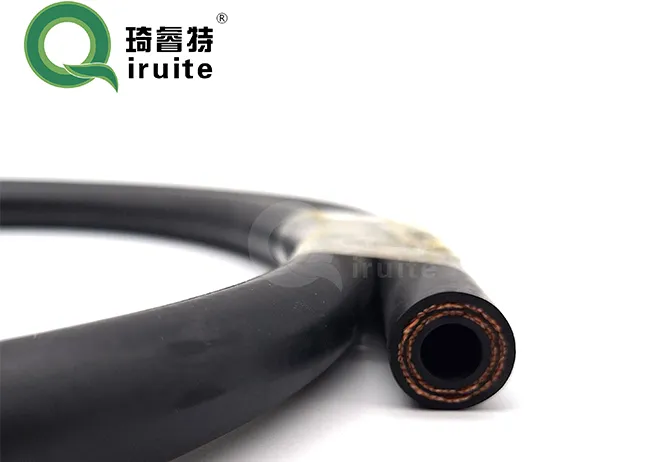Tips for Fixing a Leaking Power Steering Hose in Your Vehicle
How to Repair a Power Steering Hose Leak
Power steering is an essential system in your vehicle that allows for easier steering and better maneuverability. When there's a leak in the power steering hose, it can lead to a loss of fluid, causing the power steering system to malfunction. Addressing this issue quickly is important to ensure your vehicle operates smoothly. Here’s a comprehensive guide on how to repair a power steering hose leak.
What You Will Need
Before starting the repair, gather the necessary tools and materials. You’ll need
1. New power steering hose (specific to your vehicle model) 2. Wrench set (both metric and standard) 3. Socket set 4. Fluid pump (for refilling fluid) 5. Fluid catch pan 6. Rags or paper towels 7. Protective gloves and eyewear 8. Pliers 9. Hose clamps (if required)
Step 1 Identify the Leak
The first step in repairing a power steering hose leak is to diagnose the source of the leak. Start the engine and let it run for a few minutes. Then, turn the steering wheel back and forth while inspecting the hoses. Look for any signs of wetness or fluid pooling, which indicate where the leak is occurring. Common areas include connections at the steering rack, pump, or where the hose meets the reservoir.
Step 2 Prepare the Vehicle
Once you've identified the leak, prepare your vehicle for repair
1. Safety First Park the car on a flat surface, turn off the engine, and let it cool down completely. Engage the parking brake. 2. Fluid Catch Pan Place a fluid catch pan under the power steering pump to catch any fluid that may leak during the repair process. 3. Inspect Surroundings Make sure there are no obstacles around the engine compartment that could interfere with your work.
Step 3 Remove the Old Hose
To remove the damaged hose
how to repair power steering hose leak

1. Locate the Hose Trace the power steering hose from the pump to the steering rack to determine the points of attachment. 2. Loosen Clamps Use a wrench or pliers to loosen and remove the hose clamps securing the hose at both ends. 3. Remove the Hose Carefully pull the hose away from the fittings. You may need to wiggle it slightly to break the seal. Be cautious as some fluid may still remain in the hose.
Step 4 Install the New Hose
After removing the old hose, it’s time to install the new one
1. Align New Hose Position the new power steering hose where the old one was secured. 2. Attach Fittings Slide the hose onto the fittings and ensure they fit snugly. 3. Secure Clamps Reattach the hose clamps, ensuring they are tightly secured to prevent any future leaks.
Step 5 Refill Power Steering Fluid
With the new hose installed, refill the power steering fluid
1. Locate Reservoir Find the power steering fluid reservoir under the hood. 2. Refill Use a funnel to pour the recommended type of fluid into the reservoir, being careful not to overfill. Consult your vehicle’s manual for the correct fluid type. 3. Check Levels After filling, check the fluid level via the dipstick or indicator on the reservoir cap.
Step 6 Test the System
Once the new hose is in place and the fluid has been added, it’s time to test the system
1. Start the Engine Turn on the vehicle and let it idle. 2. Turn the Wheel Slowly turn the steering wheel left and right to circulate the fluid through the system. This will help purge any air bubbles that may be trapped. 3. Inspect for Leaks While the engine runs, check the new hose and connections for any signs of leaks. If you notice any leaks, turn off the engine and recheck the hose installations.
Conclusion
Repairing a power steering hose leak is a straightforward process that can save you a lot of money compared to taking your car to a mechanic. By following these steps, you can restore the functionality of your power steering system. Always remember to prioritize safety, wear protective gear, and consult your vehicle’s manual when in doubt. Regular maintenance and inspection can help catch leaks early, keeping your power steering system working efficiently for years to come.
-
Ultimate Spiral Protection for Hoses & CablesNewsJun.26,2025
-
The Ultimate Quick-Connect Solutions for Every NeedNewsJun.26,2025
-
SAE J1401 Brake Hose: Reliable Choice for Safe BrakingNewsJun.26,2025
-
Reliable J2064 A/C Hoses for Real-World Cooling NeedsNewsJun.26,2025
-
Heavy-Duty Sewer Jetting Hoses Built to LastNewsJun.26,2025
-
Fix Power Steering Tube Leaks Fast – Durable & Affordable SolutionNewsJun.26,2025

